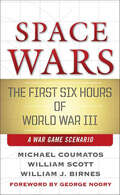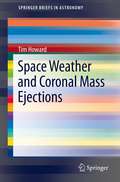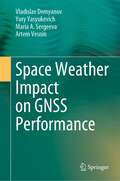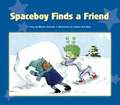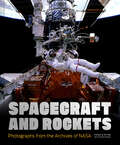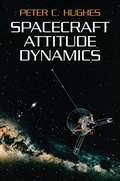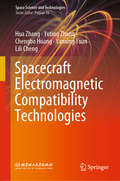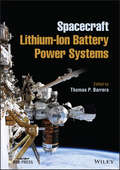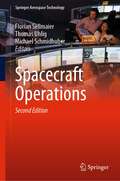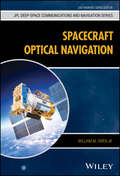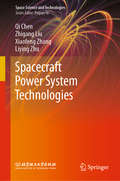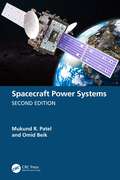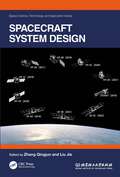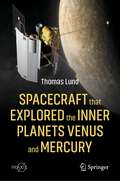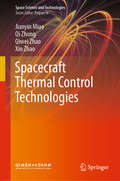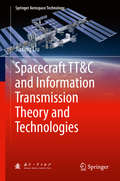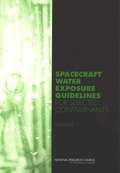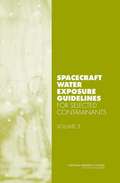- Table View
- List View
Space Wars: The First Six Hours of World War III, a War Game Scenario
by William J. Birnes William Scott Michael CoumatosMichael J. Coumatos is a former U.S. Navy test pilot, ship's captain, and commodore; U.S. Space Command director of wargaming; and a government counterterrorism advisor. William Scott is a retired bureau chief of Aviation Week and Space Technology and a nine-year Air force veteran who served as aircrew on nuclear sampling missions. He is a six-time Royal Aeronautical Society "Journalist of the Year" finalist, and won the Society's 1998 Lockheed Martin Award for the "Best Defense Submission." He also received both the 2006 and 2007 Messier-Dowty awards for "Best Airshow Submission." With the help of New York Times bestselling author William J. Birnes, these renowned experts have joined forces to grippingly depict how the first hours of World War III might play out in the year 2010.Coumatos, Scott, and Birnes take the reader inside U.S. Strategic Command, where top military commanders, space-company executives, and U.S. intelligence experts are conducting a DEADSATS II wargame, exploring how the loss of critical satellites could lead to nuclear war. The players don't know that the war they are gaming has already begun, miles above them in the lifeless, silent cold of space. Jam-packed with the actual systems and secret technologies the United States has or will soon field to protect its space assets, Space Wars describes a near-future nuclear nightmare that terrorists will relish but politicians prefer to ignore. In a quieter, more peaceful time, Space Wars would be an exciting work of fiction. But with the United States now at war, Space Wars is all too real. .At the Publisher's request, this title is being sold without Digital Rights Management Software (DRM) applied.
Space Weapons Earth Wars
by Dana J. Johnson Michael D. Miller Robert Preston Sean J. Edwards Calvin ShipbaughThis overview aims to inform the public discussion of space-based weapons by examining their characteristics, potential attributes, limitations, legality, and utility. The authors do not argue for or against space weapons, nor do they estimate the potential costs and performance of specific programs, but instead sort through the realities and myths surrounding space weapons in order to ensure that debates and discussions are based on fact.
Space Weather and Coronal Mass Ejections
by Tim HowardSpace weather has attracted a lot of attention in recent times. Severe space weather can disrupt spacecraft, and on Earth can be the cause of power outages and power station failure. It also presents a radiation hazard for airline passengers and astronauts. These "magnetic storms" are most commonly caused by coronal mass ejections, or CMES, which are large eruptions of plasma and magnetic field from the Sun that can reach speeds of several thousand km/s. In this SpringerBrief, Space Weather and Coronal Mass Ejections, author Timothy Howard briefly introduces the coronal mass ejection, its scientific importance, and its relevance to space weather at Earth and other planets. This title focuses on the latest advances in CME observation and modeling, including new results from the NASA STEREO and SDO missions. It also includes topical issues regarding space weather and the most recent observations and anecdotal examples of the impacts of space weather and CMEs.
Space Weather Fundamentals
by George V. KhazanovSpace weather is one of the most significant natural hazards to human life and health. Conditions of the sun and in the solar wind, magnetosphere, ionosphere, and thermosphere can influence the performance and reliability of space-borne and ground-based technological systems. If conditions in the space environment are adverse, they can cause disruption of satellite operations, communications, navigation, and electric power distribution grids, leading to a variety of socioeconomic losses. This book provides an overview of our current knowledge and theoretical understanding of space weather formation and covers all major topics of this phenomena, from the sun to the Earth’s ionosphere and thermosphere, thus providing a fully updated review of this rapidly advancing field. The book brings together an outstanding team of internationally recognised contributors to cover topics such as solar wind, the earth's magnetic field, radiation belts, the aurora, spacecraft charging, orbital drag and GPS.
Space Weather Impact on GNSS Performance
by Vladislav Demyanov Yury Yasyukevich Maria A. Sergeeva Artem VesninThis book addresses problems of GNSS performance support under geomagnetic storms and solar radio bursts. It analyses both physical and radio-engineering sources of GNSS performance deterioration caused by geomagnetic storms, solar radio bursts and peculiarities of the polar and equatorial ionosphere. The book takes into consideration both standalone GNSS and differential GNSS. Based on experimental data analysis, it presents a systematic approach to maintaining reliable GNSS performance despite the Space Weather impacts.Given its scope, the book offers a valuable resource for GNSS users and equipment developers, as well as researchers and students whose work involves GNSS remote sensing, surveying, navigation, and related disciplines.
Spaceboy Finds a Friend (Spaceboy #Set 1)
by Michele DufresneAfter landing earth, the spaceboy wanted to befriend a man but felt disappointed as he was a snowman. But he was lucky to get a good friend.
Spacecraft and Rockets: Photographs from the Archives of NASA (NASA)
by NASA Nirmala NatarajDiscover the remarkable NASA spacecraft that have captured our imaginations for decades.The rockets, rovers, satellites, and space stations that have charted courses into space are depicted in beautiful color images and paired with engaging annotations. Complete with a preface by Bill Nye, this collection perfectly captures the wonder and science of space exploration. From the earliest Saturn and Gemini missions through the modern-day Artemis and HALO ships, these extraordinary spacecraft will fascinate anyone intrigued by science, history, and the mysteries of the beyond. CELEBRATE INNOVATION: Spacecraft and Rockets features fascinating images accompanied by expert explanations of the history and science of space exploration. This book is a unique celebration of the technological advances that have taught us so much about the universe and our place amongst the stars. NASA-APPROVED SPACE BOOK: Bearing the official imprimatur of the legendary space agency, this stellar hardcover volume provides a guided tour through the history of NASA's most exciting innovations and inventions. FOR THE CURIOUS MIND: NASA’s beautifully documented space explorations inspire people of all ages, making this deluxe volume a wonderful gift for science enthusiasts, sci-fi fanatics, space-loving kids, and everyone in between.Perfect for: Science and technology buffs Space lovers, stargazers, and spacecraft geeks Sci-fi readers and anyone who dreams of one day going to space Teachers, students, and parents Photographers and photography enthusiasts
Spacecraft Attitude Dynamics
by Peter C. HughesPointing a satellite in the right direction requires an extremely complex system -- one that describes the satellite's orientation and at the same time predicts and either uses or neutralizes external influences.From its roots in classical mechanics and reliance on stability theory to the evolution of practical stabilization ideas, Spacecraft Attitude Dynamics offers comprehensive coverage of environmental torques encountered in space; energy dissipation and its effects on the attitude stability of spinning bodies; motion equation for four archetypical systems derived and used repeatedly throughout the text; orientation parameters (not limited to Euler angles); illustrations of key concepts with on-orbit flight data; and typical engineering hardware, with examples of the implementation of dynamic ideas.Suitable as a text for advanced undergraduates and graduate students, this unified treatment is also a valuable reference for professional engineers studying the analysis and application of modern spacecraft attitude dynamics. The sole prerequisites are a fundamental knowledge of vector dynamics and matrix algebra. Over 250 diagrams appear throughout the text, along with extensive problem sets at the end of each chapter, 350 references (cited, interpreted, and placed in perspective to reinforce the material), and two helpful appendixes.
Spacecraft Dynamics and Control
by Marcel J. SidiUsed increasingly in telecommunications, scientific research, surveillance, and meteorology, satellites rely heavily on complex onboard control systems. This book explains the basic theory of spacecraft dynamics and control and the practical aspects of controlling a satellite. The emphasis is on analyzing and solving real-world engineering problems. Among the topics covered are orbital dynamics, attitude dynamics, gravity gradient stabilization, single and dual spin stabilization, attitude maneuvers, attitude stabilization, and structural dynamics and liquid sloshing.
Spacecraft Electromagnetic Compatibility Technologies (Space Science and Technologies)
by Hua Zhang Yuting Zhang Chengbo Huang Yanxing Yuan Lili ChengThis book explores key techniques and methods in electromagnetic compatibility management, analysis, design, improvement and test verification for spacecraft. The first part introduces the general EMC technology of spacecraft, the electromagnetic interference control method and management of electromagnetic compatibility. The second part discusses the EMC prediction analysis technique and its application in spacecraft, while the third presents the EMC design of spacecraft modules and typical equipment. The final two parts address spacecraft magnetic design testing technologies and spacecraft testing technologies. The book also covers the program control test process, the special power control unit (PCU), electric propulsion, PIM test and multipaction testing for spacecraft, making it a valuable resource for researchers and engineers alike.
Spacecraft Lithium-Ion Battery Power Systems (IEEE Press)
by Thomas P. BarreraSpacecraft Lithium-Ion Battery Power Systems Provides Readers with a Better Understanding of the Requirements, Design, Test, and Safety Engineering of Spacecraft Lithium-ion Battery Power Systems Written by highly experienced spacecraft engineers and scientists working at the forefront of the aerospace industry, Spacecraft Lithium-Ion Battery Power Systems is one of the first books to provide a comprehensive treatment of the broad area of spacecraft lithium-ion battery (LIB) power systems technology. The work emphasizes the technical aspects across the entire lifecycle of spacecraft LIBs including the requirements, design, manufacturing, testing, and safety engineering principles needed to deploy a reliable spacecraft LIB-based electrical power system. A special focus on rechargeable LIB technologies as they apply to unmanned and crewed Earth-orbiting satellites, planetary mission spacecraft (such as orbiters, landers, rovers and probes), launch vehicle, and astronaut spacesuit applications is emphasized. Using a system’s engineering approach, the book bridges knowledge gaps that typically exist between academic and industry practitioners. Key topics of discussion and learning resources include: Detailed systematic technical treatment of spacecraft LIB-based electrical power systems across the entire LIB lifecycle Principles of lithium-ion cell and battery design and test, LIB sizing, battery management systems, electrical power systems, safety engineering, ground and launch-site processing, and on-orbit mission operations Special topics such as requirements engineering, qualification testing, thermal runaway hazards, dead bus events, life cycle testing and prediction analyses, on-orbit LIB power system management, and spacecraft EPS passivation strategies Comprehensive discussion of on-orbit and emerging space applications of LIBs supporting various commercial, civil, and government spacecraft missions such as International Space Station, Galileo, James Webb Telescope, Mars 2020 Perseverance Rover, Europa Clipper, Cubesats, and more Overall, the work provides professionals supporting all aspects of the aerospace marketplace with key knowledge and highly actionable information pertaining to LIBs and their specific applications in modern spacecraft systems.
Spacecraft Maximum Allowable Concentrations for Selected Airborne Contaminants: Volume 4
by National Research CouncilThe National Academies Press (NAP)--publisher for the National Academies--publishes more than 200 books a year offering the most authoritative views, definitive information, and groundbreaking recommendations on a wide range of topics in science, engineering, and health. Our books are unique in that they are authored by the nation's leading experts in every scientific field.
Spacecraft Maximum Allowable Concentrations for Selected Airborne Contaminants: Volume 3
by Subcommittee on Spacecraft Maximum Allowable ConcentrationsThe National Aeronautics and Space Administration (NASA) has measured numerous airborne contaminants in spacecraft during space missions because of the potential toxicological hazards to humans that might be associated with prolonged spacecraft missions.This volume reviews the spacecraft maximum allowable concentrations (SMACs) for various contaminants to determine whether NASA's recommended exposure limits are consistent with recommendations in the National Research Council's 1992 volume Guidelines for Developing Spacecraft Maximum Allowable Concentrations for Space Station Contaminants.
Spacecraft Maximum Allowable Concentrations for Selected Airborne Contaminants: Volume 3
by Subcommittee on Spacecraft Maximum Allowable ConcentrationsThe National Aeronautics and Space Administration (NASA) has measured numerous airborne contaminants in spacecraft during space missions because of the potential toxicological hazards to humans that might be associated with prolonged spacecraft missions.This volume reviews the spacecraft maximum allowable concentrations (SMACs) for various contaminants to determine whether NASA's recommended exposure limits are consistent with recommendations in the National Research Council's 1992 volume Guidelines for Developing Spacecraft Maximum Allowable Concentrations for Space Station Contaminants.
Spacecraft Operations (Springer Aerospace Technology)
by Florian Sellmaier Thomas Uhlig Michael SchmidhuberThis book describes the basic concepts of spacecraft operations for both manned and unmanned missions. The first part of the book provides a brief overview of the space segment. The next four parts deal with the classic areas of space flight operations: mission operations, communications and infrastructure, the flight dynamics system, and the mission planning system. This is followed by a part describing the operational tasks of the various subsystems of a classical satellite in Earth orbit. The last part describes the special requirements of other mission types due to the presence of astronauts, the approach of a satellite to another target satellite, or leaving Earth orbit in interplanetary missions and landing on other planets and moons.The 2nd edition is published seven years after the first edition. It contains four new chapters on flight procedures, the human factors, ground station operation, and software and systems. In addition, several chapters have been extensively expanded. The entire book has been brought up to date and the language has been revised.This book is based on the “Spacecraft Operations Course” held at the German Space Operations Center. However, the target audience of this book is not only the participants of the course, but also students of technical and scientific courses, as well as technically interested people who want to gain a deeper understanding of spacecraft operations.
Spacecraft Optical Navigation (JPL Deep-Space Communications and Navigation Series)
by William M. Owen Jr.UNIQUE RESOURCE EXPLORING HOW SPACECRAFT IMAGERY PROVIDES PROFESSIONALS WITH ACCURATE ESTIMATES OF SPACECRAFT TRAJECTORY, WITH REAL-WORLD EXAMPLES AND DETAILED ILLUSTRATIONS Spacecraft Optical Navigation provides detailed information on the planning and analysis of spacecraft imagery to help determine the trajectory of a spacecraft. The author, an experienced engineer within the field, addresses the entirety of celestial targets and explains how a spacecraft captures their imagery. Aimed at professionals within spacecraft navigation, this book provides an extensive introduction and explains the history of optical navigation, reviewing a range of optical methods and presents real world examples throughout. With the use of mathematics, this book discusses everything from the orbits, sizes, and shapes of the bodies being imaged, to the location and properties of salient features on their surfaces. Specific sample topics covered in Spacecraft Optical Navigation include: History of various past spacecraft, including Mariner and Viking, Voyager, Galileo, NEAR Shoemaker, and Cassini, and flight hardware, star catalogs, and stereophotoclinometryCameras, covering the gnomonic projection (and deviations from it), creation of a digital picture, picture flattening, and readout smearsModeling optical navigation observables, covering apparent directions to an object, star, and limbs or terminators, and orientation of camerasObtaining optical navigation observables, covering centerfinding for stars and resolved and unresolved bodies, and using opnav data in orbit determination Spacecraft Optical Navigation is an ideal resource for engineers working in spacecraft navigation and optical navigation, to update their knowledge of the technology and use it in their day-to-day. The text will also benefit researchers working with spacecraft, particularly in navigation, and professors and lecturers teaching graduate aerospace courses.
Spacecraft Power System Technologies (Space Science and Technologies)
by Qi Chen Zhigang Liu Xiaofeng Zhang Liying ZhuThis book provides an introduction to the main design principles, methods, procedures, and development trends in spacecraft power systems. It is divided into nine chapters, the first of which covers the classification and main components of primary power system design and power distribution system design. In turn, Chapters 2 to 4 focus on the spacecraft power system design experience and review the latest typical design cases concerning spacecraft power systems in China. More specifically, these chapters also introduce readers to the topological structure and key technologies used in spacecraft power systems. Chapters 5 to 7 address power system reliability and safety design, risk analysis and control, and in-orbit management in China’s spacecraft engineering projects. The book’s closing chapters provide essential information on new power systems and technologies, such as space nuclear power, micro- and nano-satellite power systems, and space energy interconnection systems. An outlook on future development trends rounds out the coverage.
Spacecraft Power Systems
by Mukund R. Patel Omid BeikThis second edition of Spacecraft Power Systems is a comprehensive coverage of the fundamentals, design trades, components, controls, and operations of spacecraft power systems based on the real-world design and operations of spacecraft that have successfully flown for decades. It also includes emerging high-voltage, high-power systems for in-space propulsion for interplanetary travel. With new and updated chapters, sections, and discussions, the second edition covers up-to-date high-voltage, MW-scale electric propulsion, updated PV and battery systems, spacecraft power components, power electronics, and their architectures and operations. This book also presents the latest in spacecraft design processes and trades, controls, operations, and protection. This book is intended for senior undergraduate and graduate students in mechanical, aerospace, and electrical engineering taking courses in Space Systems, Space Engineering, and Spacecraft Power Systems, as well as for practicing aerospace and power engineers and managers who are designing, developing, and operating spacecraft power systems.
Spacecraft System Design (Space Science, Technology and Application Series)
by Liu JieDrawing on practical engineering experience and latest achievements of space technology in China, this title investigates spacecraft system design and introduces several design methods based on the model development process.A well-established space engineering system with spacecraft as the core is integral to spaceflight activities and missions of entering, exploring, developing and utilizing outer space. This book expounds the key phases in the workflow of spacecraft development, including task analysis, overall plan design, external interface, configuration and assembly design and experimental verification. Subsystems that function as the nuclei of spacecraft design and important aspects in the model development process are then examined, such as orbit design, environmental influence factors, reliability design, dynamics analysis, etc. In addition, it also discusses the digital environment and methods to improve the efficiency of system design.The title will appeal to researchers, students, and especially professionals interested in spacecraft system design and space engineering.
Spacecraft that Explored the Inner Planets Venus and Mercury (Springer Praxis Books)
by Thomas LundA series of increasingly capable spacecraft were sent to explore the inner planets Venus and Mercury. The history of that planetary exploration is traced in this book along with the evolution of sophisticated spacecraft that unveiled long-sought secrets of the planets. The spacecraft were ingenious and reflected the best efforts of talented people working with the available technology of the day. Additionally, this book showcases engineering involved in those capable machines. A consecutive series of 34 planetary spacecraft, which span the time period 1961 to 2021, are described. This includes the unsuccessful missions of several early spacecraft that paved the way for a better understanding of Venus’ hostile environments. This book will describe many successful spacecraft sent to Venus by the Soviet Union and many successful spacecraft sent to Venus and to Mercury by the United States.The recent exploration of Venus by the European Space Agency’s Venus Express and the Japanese spacecraft Akatsuki can also be found in this book. The author draws on over 50 years of experience on aircraft and spacecraft systems to tell the story of these planetary spacecraft. The spacecraft experience includes being the technical lead for the landing radars on the Surveyor and Apollo lunar landers as well as providing analyses for the rendezvous radar for the Space Shuttle. Practical engineering experience is augmented by Master’s degrees in electrical engineering, physics, and business administration.
Spacecraft Thermal Control Technologies (Space Science and Technologies)
by Jianyin Miao Qi Zhong Qiwei Zhao Xin ZhaoThis book presents fundamental theories, design and testing methodologies, and engineering applications concerning spacecraft thermal control systems, helping readers gain a comprehensive understanding of spacecraft thermal control systems and technologies. With abundant design methods, advanced technologies and typical applications to help them grasp the basic concepts and principles of engineering applications, it is mainly intended for engineering and technical staff engaged in spacecraft thermal control areas. The book discusses the thermal environments commonly used for space flight missions, rules and regulations for system design, thermal analysis and simulation, and thermal testing methods, as well as the design and validation of the thermal control systems for Chinese spacecraft, such as the Shenzhou spacecraft and Chang’e Lunar Lander and Rover. It also introduces them to communication and remote sensing satellites and presents advanced thermal control technologies developed in recent years, including heat transfer, heat insulation, heating, refrigeration and thermal sensor technologies. Addressing the design and validation of thermal control systems for various types of Chinese spacecraft, the book offers a valuable theoretical and practical reference guide for researchers and engineers alike.
Spacecraft TT&C and Information Transmission Theory and Technologies
by Jiaxing LiuSpacecraft TT&C and Information Transmission Theory and Technologies introduces the basic theory of spacecraft TT&C (telemetry, track and command) and information transmission. Combining TT&C and information transmission, the book presents several technologies for continuous wave radar including measurements for range, range rate and angle, analog and digital information transmissions, telecommand, telemetry, remote sensing and spread spectrum TT&C. For special problems occurred in the channels for TT&C and information transmission, the book represents radio propagation features and its impact on orbit measurement accuracy, and the effects caused by rain attenuation, atmospheric attenuation and multi-path effect, and polarization composition technology. This book can benefit researchers and engineers in the field of spacecraft TT&C and communication systems. Liu Jiaxing is a professor at The 10th Institute of China Electronics Technology Group Corporation.
Spacecraft Water Exposure Guidelines: For Selected Contaminants
by National Research Council of the National AcademiesThe International Space Station is a closed and complex environment, so some contamination of its internal atmosphere and water system is expected. To protect space crews from contaminants in potable and hygiene water, the National Aeronautics and Space Administration (NASA) requested that the National Research Council (NRC) provide guidance on how to develop water exposure guidelines and review NASA’s development of the exposure guidelines for specific chemicals. NASA selects water contaminants for which spacecraft water exposure guidelines (SWEGs) will be established; this involves identifying toxicity effects relevant to astronauts and calculating exposure concentrations on the basis of those end points. SWEGs are established for exposures of 1, 10, 100, and 1,000 days. This report is the second volume in the series, Spacecraft Water Exposure Guidelines for Selected Chemicals. SWEG reports for acetone, alkylamines, ammonia, barium, cadmium, caprolactam, formate, formaldehyde, manganese, total organic carbon, and zinc are included in this report. The committee concludes that the SWEGs developed for these chemicals are scientifically valid based on the data reviewed by NASA and are consistent with the NRC (2000) report, Methods for Developing Spacecraft Water Exposure Guidelines. SWEG reports for additional chemicals will be presented in a subsequent volume.
Spacecraft Water Exposure Guidelines: For Selected Contaminants
by Subcommittee on Spacecraft Exposure GuidelinesTo protect space crews from contaminants in potable and hygiene water, NASA requested that the National Research Council (NRC) provide guidance on how to develop water exposure guidelines and subsequently review NASA’s development of exposure guidelines for specific chemicals.
Spacecraft Water Exposure Guidelines For Selected Contaminants: Volume 3
by National Research Council of the National AcademiesNASA maintains an active interest in the environmental conditions associated with living and working in spacecraft and identifying hazards that might adversely affect the health and well-being of crew members. Despite major engineering advances in controlling the spacecraft environment, some water and air contamination is inevitable. Several hundred chemical species are likely to be found in the closed environment of the spacecraft, and as the frequency, complexity, and duration of human space flight increase, identifying and understanding significant health hazards will become more complicated and more critical for the success of the missions. To protect space crews from contaminants in potable and hygiene water, NASA requested that the National Research Council NRC provide guidance on how to develop water exposure guidelines and subsequently review NASA's development of the exposure guidelines for specific chemicals. This book presents spacecraft water exposure guidelines (SWEGs) for antimony, benzene, ethylene glycol, methanol, methyl ethyl ketone, and propylene glycol.
